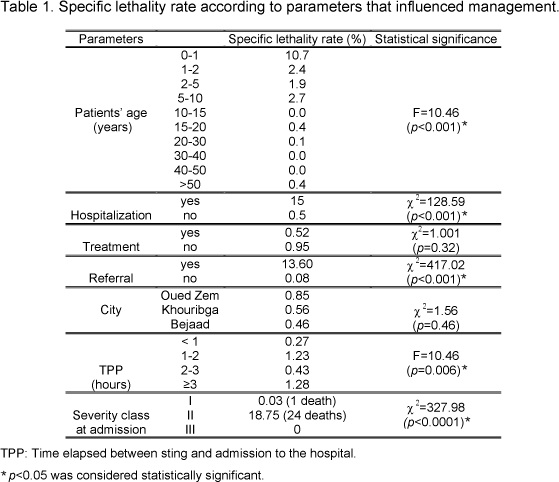Over the three years of investigation, 4089 data about scorpion stings were collected. The frequency of victims increased year after year and the incidence was 2.76‰. The mean age of the patients was 26.7 years (Standard Deviation: 18.2; age range: 1-97 years). The age group 1-15 years represented one third of cases; the group 20-30 years, 779 cases; and the group <1 year, 25 cases. The group <30 years was the most affected, which corresponded with the demographic profile of the country; 33% of the patients were 15 years old or younger.
The male/female ratio was 0.92, confirming that scorpions sting at random, independent of sex.
Stings were mainly observed between May and September with a peak in July (29.8%) and an incidence of 2.4‰. Forty-three percent of the stings occurred between 6:00 p.m. and 12:00 p.m. The average time elapsed between sting and admission to hospital (TPP) was 1.5h (Standard Deviation: 28min or 0.46h; time range:
10min – 24h). The majority of victims (91.4%) arrived at the hospital in less than three hours after the accident. Most patients were admitted to the central hospital in Khouribga (40%) and 6.6% were referred to the same hospital, mainly from Oued Zem. Based on clinical evaluation, the great majority of patients belonged to severity class I (93.3%), followed by class II (6.6%) and class III (0.1%). The average time of follow up was 4 hours. The higher the TPP, the shorter the follow-up length.
Two percent of the stung patients were hospitalized, which represented 30% of the envenomation cases.
Twenty-five deaths were recorded, out of which 10 cases were from the age group 5-10 years. Lethality rate of the stung patients was 0.7% and that of envenomed patients was 9.2%, which was marked in children (Table1).

